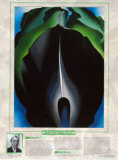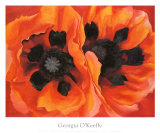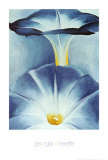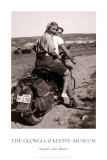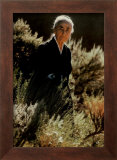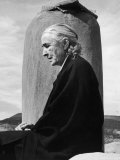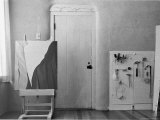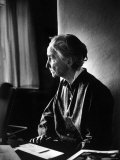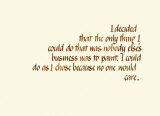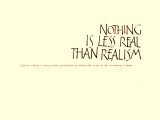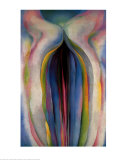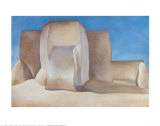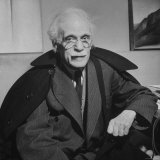|
|
|||
|
|||
|
|
|||
|
|||
|
|
|||
|
|||
|
|
|||
 |
|||
|
|
Georgia O’Keeffe Posters, Prints, Links for Learning
|
||||||||||||||||||||||||||||||||||||||||||||||||||||||||||||||||||||||||||||||||||||||||||||||||||||||||||||||||||||||||||||||||||||
|
history of art > GEORGIA O'KEEFFE < notable women < social studies |
||||||||||||||||||||||||||||||||||||||||||||||||||||||||||||||||||||||||||||||||||||||||||||||||||||||||||||||||||||||||||||||||||||
|
Georgia O’Keeffe was born November 15, 1887, the daughter of Francis and Ida Ten Eyck Totto O’Keeffe. She was the second of seven children and grew up on a dairy farm in Sun Prairie, Wisconsin. As a child Georgia like working with her hands, making a doll house and doll clothes that lent itself to the solitary play she preferred. She and her sisters were able to study art with lessons on perspective and shading with a neighbor and then study watercolor painting with another local artist. When she was thirteen she told a neighbor she wanted to be an artist. Georgia O’Keeffe studied art at the Chicago Institute of Art, the Art Students League of New York, and Columbia Teachers College. It was during her New York studies she met photographer Alfred Stieglitz and the beginning of a legendary love affair and marriage. Stieglitz and O’Keeffe married in December 1924. He was her most avid supporter and mentor, she his most famous photographic subject. They shared their time between New York City and his family home in Lake George, NY. Best known for her giant flowers, red deserts and bones, O’Keeffe’s search for meaning and beauty brought new forms, surfaces and colors into consciousness. O’Keeffe died on March 6, 1986, at the age of 98 and her ashes were spread on the top of the Pedernal Mountain in her beloved New Mexico. |
||||||||||||||||||||||||||||||||||||||||||||||||||||||||||||||||||||||||||||||||||||||||||||||||||||||||||||||||||||||||||||||||||||
Georgia O'Keeffe quotes: Georgia O’Keeffe Georgia O’Keeffe was born November 15, 1887, the daughter of Francis and Ida Ten Eyck Totto O’Keeffe. She was the second of seven children and grew up on a dairy farm in Sun Prairie, Wisconsin. As a child Georgia like working with her hands, making a doll house and doll clothes that lent itself to the solitary play she preferred. She and her sisters were able to study art with lessons on perspective and shading with a neighbor and then study watercolor painting with another local artist. When she was thirteen she told a neighbor she wanted to be an artist. Georgia O’Keeffe studied art at the Chicago Institute of Art, the Art Students League of New York, and Columbia Teachers College. It was during her New York studies she met photographer Alfred Stieglitz and the beginning of a legendary love affair and marriage. Stieglitz and O’Keeffe married in December 1924. He was her most avid supporter and mentor, she his most famous photographic subject. They shared their time between New York City and his family home in Lake George, NY. Best known for her giant flowers, red deserts and bones, O’Keeffe’s search for meaning and beauty brought new forms, surfaces and colors into consciousness. O’Keeffe died on March 6, 1986, at the age of 98 and her ashes were spread on the top of the Pedernal Mountain in her beloved New Mexico. Read more about Georgia O’KeeffeSunflower by Georgia O’Keeffe - Georgia O’Keeffe Museum - opened in summer 1997 in Santa Fe, presenting works from all periods of the artist’s long career. Providing a remarkable virtual tour through the museum, this beautiful clothbound volume with French folded jacket features essays by leading art writers. Portrait of an Artist: Georgia O’Keeffe by Laurie Lisle - Georgia O’Keeffe, one of the most original painters America has ever produced, left behind a remarkable legacy when she died at the age of ninety-eight. Her vivid visual vocabulary – sensuous flowers, bleached bones against red sky and earth – had a stunning, profound, and lasting influence on American art in this century. Georgia O’Keeffe at Ghost Ranch: A Photo Essay by John Loengard - The vast landscape of New Mexico won the heart of American artist Georgia O’Keeffe on her first visit there in 1917, and the open sky, parched earth, and bleached white bones she found there soon became the prominent subjects of her paintings. She granted John Loengard, a photographer for Life magazine, the rare opportunity to photograph her in her home at Ghost Ranch in 1966. Fifty of the black-and-white photographs he took that day fill this 79-page, small-format hardcover and form a classic record of a day in the life of an eminent yet elusive artist. Quotes by O’Keeffe about New Mexico and brief biographies of the painter and Loengard add extra dimension to the images. Georgia O’Keeffe: A Life by Roxana Robinson - Georgia O’Keeffe is arguably the twentieth century's leading woman artist. Coming of age along with American modernism, her life was filled with intense relationships - with family, friends, and especially noted photographer Alfred Stieglitz. Her struggle between the rigorous demands of love and work resulted in extraordinary accomplishments. Her often-eroticized flowers, bones, stones, skulls and pelvises became extremely well known to a broad American public. New York Times Book Review named Roxana Robinson’s biography as a Notable Book of 1989. O’Keeffe at Abiquiu by Myron Wood - intimate look at O’Keeffe through text and photos gives us a better look at this complicated artist. Stieglitz: A Memoir/Biography by Alfred Stieglitz - A tireless exponent of the avant-garde and of photography as a fine art, as well as a consummate photographer in his own right, Alfred Stieglitz was both the embodiment of rebellious New York modernism and an oddly domestic man who retained a lifelong attachment to his family's country estate. In Stieglitz: A Memoir/Biography, author Sue Davidson Lowe, Stieglitz's grand-neice, presents the man in all of his complexity, tracing his background and revealing the interplay between his character and his multifaceted career. She offers new insight into Stieglitz's relationships with artists such as Marin, Hartley, Dove, Steichen, and O'Keefe; his pioneering promotion of Europe's most radical artists through the Photo-Secession group and the 291 gallery; and his creation of some of our century's most enduring photographic images. Gracefully weaving personal reminiscence and verifiable fact as she lucidly interweaves Stieglitz's career with his personal life, Lowe presents a uniquely compelling and intimate portrait of a hugely influential, hugely enigmatic American artist. Moon Handbooks: New Mexico - In Stephen Metzger's updated and revised Moon Handbooks New Mexico, travelers are given all the details they need to experience the culture and beauty of America's fifth largest state. From an insider's tour of Santa Fe artisan shops to skiing the Sangre de Christos to whitewater rafting the Rio Grande, Metzger provides information on all that New Mexico has to offer. Travelers can experience a range of recreational opportunities -- hiking, biking, camping, golf, boating, skiing, and more -- in the state's many parks and wilderness areas. Albuquerque, Santa Fe, Taos, and Las Cruces are full of cultural enjoyment, excellent food, a wide range of accommodations and shopping opportunities, and works of art -- particularly painting, pottery, textiles and jewelry. The three major players in the development of New Mexico -- Native Americans, the Spanish, and Mexicans -- continue to strongly influence the state, offering a rich tableau of historical sites and a look into unique cultures and traditions that are a thousand years old. Insightful, distinctive, and informative. LINKS FOR LEARNING: GEORGIA O’KEEFFE
|
||||||||||||||||||||||||||||||||||||||||||||||||||||||||||||||||||||||||||||||||||||||||||||||||||||||||||||||||||||||||||||||||||||
|
previous page | top
|
|
|
|
|
NPW home | Global PathMarker Collection | APWTW Blog | faqs-about | contact | search | privacy |
|
NetPosterWorks.com ©2007-2015 The Creative Process, LLC All Rights Reserved. |
last updated







